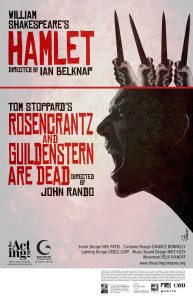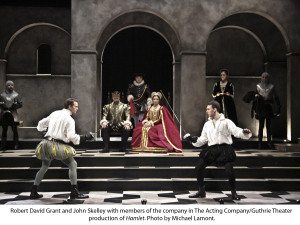
Welcome to Thebes, 440 BC. King Oedipus is dead. His remaining sons, Eteocles and Polynices could have succeeded the throne but Etecoles said (theoretically), “ Hands off! I get the Kingdom! me! Me! ME!” Polynices said (once again, theoretically), “No! I get the Kingdom! It’s mine! ME! ME! ME!” Clearly, equilateral ownership was a foreign concept to them, so they did what any jealous Greek siblings would do: they killed each other. Consequently, Oedipus’ brother, Creon reluctantly nabbed the crown. He is not at all thrilled about being a leader. He is tired and would rather spend his days relaxing and doing whatever the 440 BC’s version of Candy Crush is. Eteocles has received a state funeral , while younger brother Polynices is provided the opportunity to lie dead in the street for a month because Creon refuses a burial for him. As far as Creon is concerned, “the vultures and dogs are to bloat themselves on his carcass.” This, in an age long before Febreeze!
Enter Antigone and Ismene, dead King Oedipus’ daughters and sisters to the bozos who just slaughtered each other. Antigone wants a proper burial for Polynices, the love of her cousin Haemon (yes..you read that correctly-cousin) , and a chance to irritate Creon, who is planning to bury her alive in a cave if she defies his laws. Dark, right? Haemon defends Antigone by claiming that the city mourns for her, but Creon doesn’t want to hear it. Does love prevail in the end? SPOILER ALERT: No! Ultimately, everyone dies. This is Greek drama after all. You didn’t expect a big song and dance number, did you?
What you can expect is a solid staging of Sophocles’ Greek tragedy Antigone, translated by Jean Anouilh. It is currently being staged in an efficient black box space at the theatre of the Church of Notre Dame. Director Peter Dobbins has assembled a group of competent actors who have fully grasped their purpose and understand the moral issues at stake. Kick Kennedy (of the famed Kennedy dynasty), gives us a defiant and apathetic Antigone. Yet in her youthfulness, she maintains a pained vulnerability and frailty that evokes empathy and understanding. I mean–all she wants to do is bury her dead brother. Give the poor girl a break! Michael Early’s Creon is commanding and authoritative. With pages of dialogue between Antigone and Creon, both handle it with seemingly effortless ease. Jose Sanchez’s First Guard offers much needed comic relief. The moments are sparse, but he manages to capitalize on them.
Anoulilh’s interpretation rings true. First performed in 1944, his script lends itself to human reflection. “It is easy to say no [to life], Creon instructs Antigone. “ To say yes, you have to sweat and roll up your sleeves and plunge both hands into life up to the elbows. It is easy to say no, even if saying no means death.” Thousands of years later, Sophocles’ words remain timeless and relevant.
Antigone now through Feb. 15 at The Storm Theater. 405 West 114 Street on the corner of Morninside Drive. For tickets, https://www.smarttix.com/show.aspx?showcode=ANT22 or http://www.stormtheatre.com/























